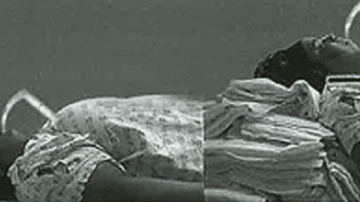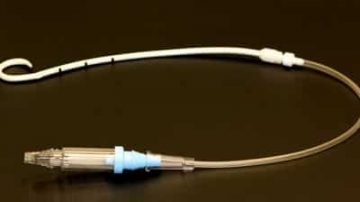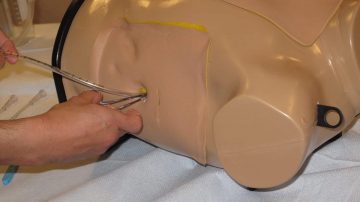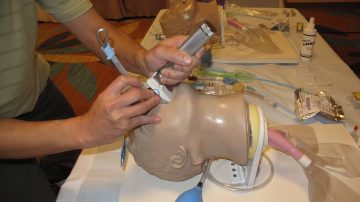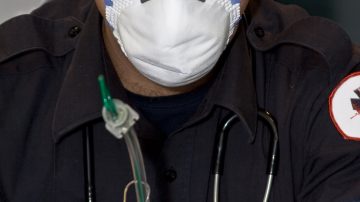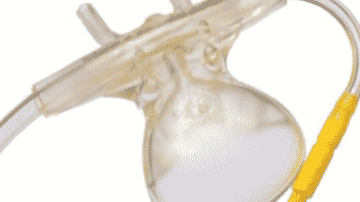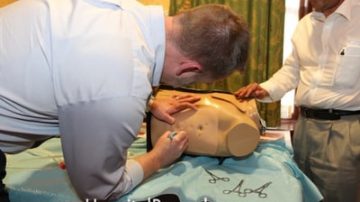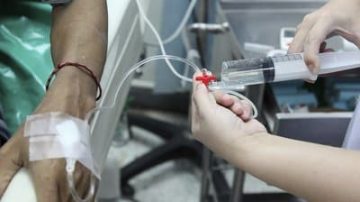Procedural sedation and analgesia (PSA) is a widespread practice that allows the patient to maintain oxygenation and independent airway control while being in a sedated or dissociative state. When should PSA be used and avoided? What are the various levels…
Read MoreDelays to hospital inpatient admission in excess of five hours from arrival at an Emergency Department (ED) lead to a mortality rate of 8.71%. This increases by another 8% in cases where admission is delayed beyond six to eight hours. …
Read MoreWhat is conscious sedation? Conscious sedation, also known as procedural sedation, is a common practice in emergency departments for patients undergoing painful or anxiety-provoking procedures. It is intended as a less invasive method. Generally, those who undergo this type of…
Read MoreMore Articles – Arterial line, Cardiovascular diseases, Central line, Chest Tube, Emergency Procedures, Endotracheal Intubation, Events, FAST Exam, Intraosseous line, King Tube, Laryngeal Mask Airway, Lumbar Puncture, Mechanical Ventilation, Medical General, medical procedures, Needle Decompression, Paracentesis, Procedural Sedation, RUSH Exam, Thoracentesis, Ultrasound-Guided Peripheral IV
Physicians, physician associates (PAs), and nurse practitioners (NPs) need to be adept in a range of essential medical emergency procedures that they must perform in an inpatient settings. These bedside procedures are accomplished readily, but only if you have the…
Read MoreMorbidly obese patients can pose numerous challenges when it comes to airway management. Morbid obesity can make vascular access more difficult and you need good vascular access prior to any attempts at safe airway management. In addition, morbid obesity can…
Read MoreA patient with a hemodynamically stable spontaneous pneumothorax can be managed as an outpatient using the placement of a small-bore pigtail catheter attached to a Heimlich valve. As the Director of Medicine at a teaching hospital, I frequently encounter…
Read MoreThis blog summarizes recommended management of chest tube drainage of the pleural space. The blog will cover the recommended size of chest tube for different indications, suggestions for chest tube insertion technique, methods to avoid chest tube complications and when…
Read MoreTOP TEN AIRWAY MANAGEMENT PEARLS TO OPTIMIZE YOUR CHANCES OF SECURING AN AIRWAY Develop a difficult airway management plan Huddle with your nurse and respiratory therapist in advance to alert everybody what plan A/B/C/D are for the patient If plan…
Read MoreA recent article summarizes a cross-sectional survey aimed at determining the processes in place to assess the procedural competency of academic emergency medicine attendings.[i] The survey was sent to the 39 ACGME-accredited Emergency Medicine programs in the U.S. and had…
Read MoreThe SARS-COV-2 pandemic started in January 2020 and has decimated the majority of U.S. hospitals for the past 18 months. The impact of COVID-19 has not only affected available hospital beds, but has limited the ability of hospitals to perform…
Read MoreThe American College of Physicians (ACEP) has previously published guidelines in October 2013 about Procedural Sedation and Analgesia. In these guidelines, they provided Level B recommendations that state, “Do not delay procedural sedation in adults or pediatrics in the ED…
Read MoreContinuous Capnometry Should be Standard Practice for Moderate-Deep Procedural Sedation Continuous capnometry has been consistently proven to identify patients undergoing moderate-deep procedural sedation who have impaired ventilation well before hypoxia develops. There have been at least 8 studies that have…
Read MoreChest tube placement, or tube thoracostomy, can be an anxiety-provoking procedure for both the patient AND the operator. It can also be a very gratifying procedure for the operator when performed successfully and without patient discomfort. Here are a few…
Read MoreMore Articles – Emergency Procedures, Featured, Mechanical Ventilation, medical procedures, Procedural Sedation
Researchers assessed the incidence of sedation-related serious adverse events (SAEs) and risk factors for them in a prospective cohort study of children ≤18 years of age presenting to six Canadian pediatric emergency departments (EDs) and requiring sedation for painful procedures.…
Read MoreIn Australia, investigators analyzed 573 random adults from three emergency departments (EDs). These patients were to receive ketofol (a 1:1 mixture of ketamine and propofol) or propofol prior to a painful procedure. Initially, ketofol was administered intravenously at 0.25 mg/kg…
Read MoreCategories
- ACLS (1)
- Arterial line (33)
- Cardiovascular diseases (77)
- Central line (55)
- Chest Tube (39)
- Dermatology (4)
- Emergency Procedures (138)
- Endocrinology (6)
- Endotracheal Intubation (36)
- Events (24)
- FAST Exam (12)
- Featured (112)
- Featured Procedure (42)
- Gastrointestinal diseases (32)
- Ginecology (3)
- Glidescope Intubation (21)
- Hematology (33)
- Hospital Procedures (85)
- Infections (32)
- Intraosseous line (8)
- King Tube (27)
- Laryngeal Mask Airway (18)
- Lumbar Puncture (36)
- Mechanical Ventilation (34)
- Medical General (95)
- medical procedures (258)
- Needle Decompression (6)
- Nephrology (11)
- Neurological diseases (12)
- Oncology (4)
- Paracentesis (32)
- Pericardiocentesis (3)
- Procedural Sedation (19)
- Respiratory diseases (85)
- RUSH Exam (8)
- Thoracentesis (37)
- Traumatology (24)
- Travel (27)
- Ultrasound-Guided Peripheral IV (13)





